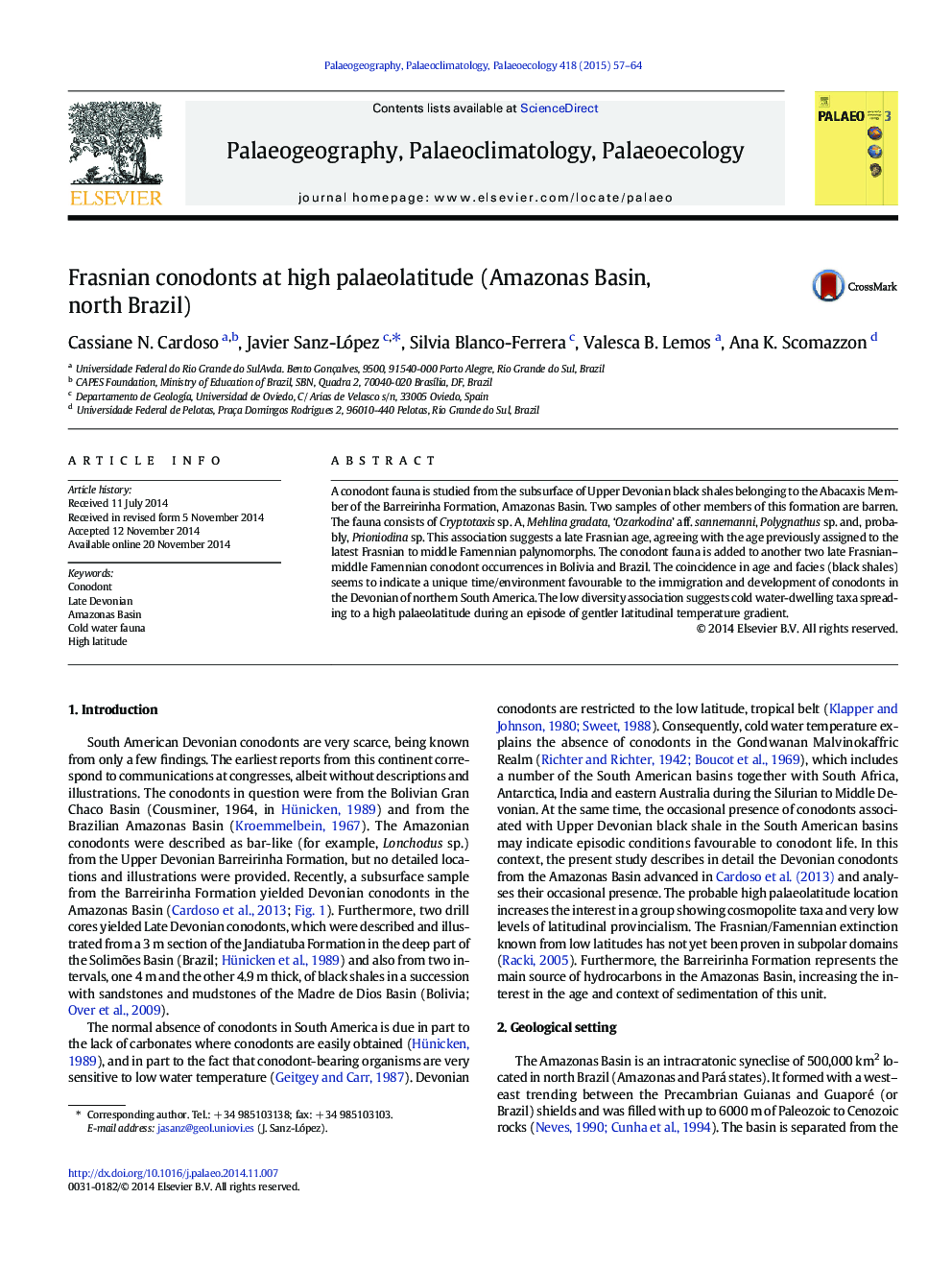| Article ID | Journal | Published Year | Pages | File Type |
|---|---|---|---|---|
| 6349790 | Palaeogeography, Palaeoclimatology, Palaeoecology | 2015 | 8 Pages |
â¢Late Frasnian conodont association is described in detail from the Amazonas Basin.â¢They constitute a low diversity association composed of cold-water tolerant taxa.â¢It is distinct from low latitudes faunas, but is similar to South America ones.â¢It is related to Frasnian-Famennian gentler palaeolatitudinal temperature gradient.
A conodont fauna is studied from the subsurface of Upper Devonian black shales belonging to the Abacaxis Member of the Barreirinha Formation, Amazonas Basin. Two samples of other members of this formation are barren. The fauna consists of Cryptotaxis sp. A, Mehlina gradata, 'Ozarkodina' aff. sannemanni, Polygnathus sp. and, probably, Prioniodina sp. This association suggests a late Frasnian age, agreeing with the age previously assigned to the latest Frasnian to middle Famennian palynomorphs. The conodont fauna is added to another two late Frasnian-middle Famennian conodont occurrences in Bolivia and Brazil. The coincidence in age and facies (black shales) seems to indicate a unique time/environment favourable to the immigration and development of conodonts in the Devonian of northern South America. The low diversity association suggests cold water-dwelling taxa spreading to a high palaeolatitude during an episode of gentler latitudinal temperature gradient.
Graphical abstractDownload high-res image (445KB)Download full-size image
